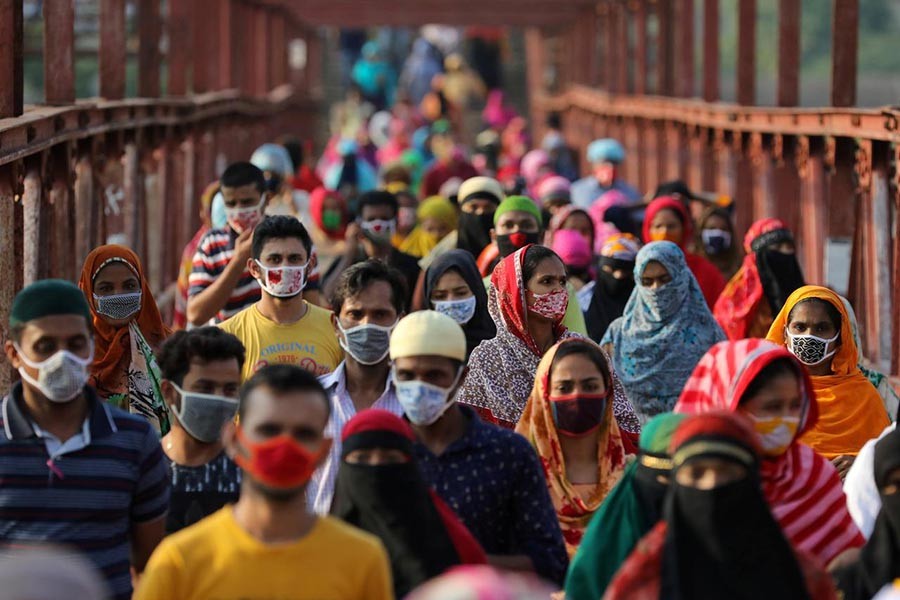National
6 years ago
COVID-19 impacts in seven charts: An analysis by Research and Policy Integration for Development (RAPID)

Published :
Updated :


- Bangladesh reported the first confirmed COVID-19 death on 18 March 2020 –10 days after reporting the first reported infection on 8 March 2020. As of 15 May, the total number of confirmed cases stood at 20,065 while the number of deaths being reported 298.

- An increasing trend is being observed in terms of new COVID-19 cases per day. Bangladesh is yet to reach the peak in terms of daily cases. From the experience of other countries, it can be predicted that COVID-19 infections per day will surge.

- The International Monetary Fund (IMF) predicted that Bangladesh’s GDP growth would slump to 2 per cent in 2020 – the lowest in 33 years – followed by a recovery of 9.5 per cent in 2021. The World Bank also estimated a 2-3 percent growth in this fiscal year.

- Export earnings in March 2020 were only $520 million compared to $3.03 billion during the same month last year, experiencing a 83 per cent decline. Readymade garments, which comprise more than 80 per cent of total merchandise exports, fell by 85 per cent. Export earnings in the first ten months of the current fiscal year (FY20) were 13.1 per cent lower than those of the corresponding period of the previous year.

- Remittances dropped by 25 per cent in April following a 12 per cent fall in the previous month. In April, the total remittance inflow was $1.08 billion compared to $1.43 billion during the same month in 2019. The World Bank projects that the inflow of remittances into Bangladesh could plunge by 22 per cent in 2020

- Currently there are no official estimates of the incidence of poverty arising from COVID-19 fallout. However, estimates of several think-tanks, based on different assumptions, suggest that the COVID-induced new poor would be in the range of 24–41.7 million. The portion of the population living below the poverty line is simulated to be 34.1–44 per cent against the pre-crisis estimate of 20.5 per cent.

- According to the International Labour Organization (ILO), COVID-related full or partial lockdown are affecting roughly 2.7 billion or more than 80 per cent of the global workforce. Global working hours declined in the first quarter of 2020 by an estimated 4.5 per cent (equivalent to approximately 130 million full-time jobs) compared to the pre-crisis situation. The corresponding figure in the second quarter are expected to be 10.5 per cent (equivalent to 305 million full-time jobs). Lower-middle-income countries including Bangladesh are expected to register the highest rate of hours lost, at 12.5 per cent. The Asian Development Bank (ADB) estimated that job loss in Bangladesh could be in the range 1.4–3.7 million. A PRI study reported the loss of employment could have hit as many as 10–12 million households.
Dr M Abu Eusuf is a professor, Department of Development Studies, University of Dhaka, and executive director, Research and Policy Integration for Development (RAPID); email: eusuf101@gmail.com
Jillur Rahman is a lecturer in Economics at Jagannath University; email: jillurrahman@econdu.ac.bd


 For all latest news, follow The Financial Express Google News channel.
For all latest news, follow The Financial Express Google News channel.